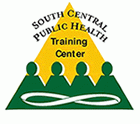
8 Steps to Building and Sustaining Effective Coalitions
Overview
Course Description:
Have you ever tried to convince your health director, mayor, school board, minister, or business owner to support your community coalition? It’s not always easy, especially if he or she is not convinced that working in partnership is the best approach. This presentation will help you define coalitions, learn when and how to use them, and provide eight steps for building effective coalitions that promote health, a healthy environment, and prevent disease. By focusing on these steps, your coalition will be poised to reach its goals and sustain itself for the long haul.
Note: This course was originally delivered as a satellite broadcast.
Target Audience
Academic Faculty/Staff, Federal Government Employees, State Government Employees, Local Government Employees, Non-Government Employees and Students
Learning Objectives
- Describe three characteristics of effective coalitions
- Recount three successes and three barriers to coalition effectiveness and their resolutions
- Identify eight essential steps for building and sustaining effective coalitions
- Learn valuable lessons from actual community coalitions
Faculty
Instructor:

Frances Dunn Butterfoss, PhD, MSEd
President
Coalitions Work
Professor
Eastern Virginia Medical School and Old Dominion University
Norfolk, Virginia
Accreditation
Available Credit
- 2.00 Participation/CETulane Professional and Continuing Education (PaCE) awards 2.00 hour(s) of credit for completing 8 Steps to Building and Sustaining Effective Coalitions
Register/Take course
Price
Required Hardware/software
System Settings
This course is designed to work most effectively if your computer and internet connection meet certain minimal requirements. This course can be accessed using a Windows 10 PC or a Mac with High Sierra1, Mojave, or Catalina. Pop-up blockers should be disabled when viewing the course. Internet Explorer 11 (for Windows 10), or the current version of Google Chrome, Mozilla Firefox, or Apple Safari (for Windows 10 and or Mac) is required. Many of our courses require Java and JavaScript enabled.
Links to External Websites
Links to websites outside this course will open in a new window or tab. Some browsers may minimize the course window. If this occurs, maximize the course window to return to the course.
Adobe Acrobat Reader (for desktops and laptops)
Adobe Acrobat Reader is required to access some documents in this course. If you need to download a free copy of Acrobat Reader, click here.
Internet Connection Speed
A minimum download speed of 1.5 Mbps is recommended for an optimal experience, which is commonly the speed associated with a basic DSL or a cellular/satellite connection. A faster connection, such as cable or fiber service, with further enhance your online experience. A Wi-Fi connection is generally acceptable, but it is dependent upon one of the two services mentioned above. You can check your internet connection speed at http://www.speedtest.net/.

 Facebook
Facebook Twitter
Twitter LinkedIn
LinkedIn Forward
Forward